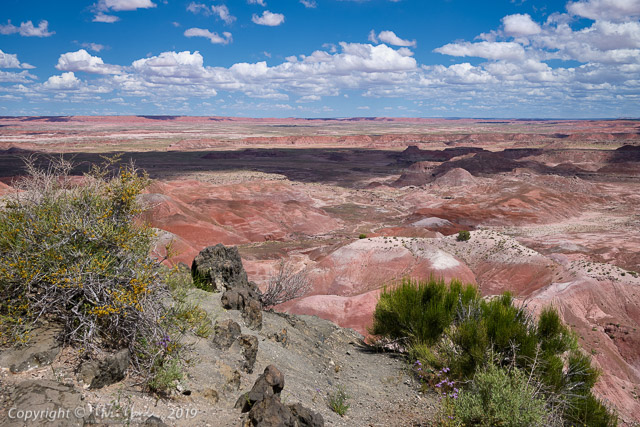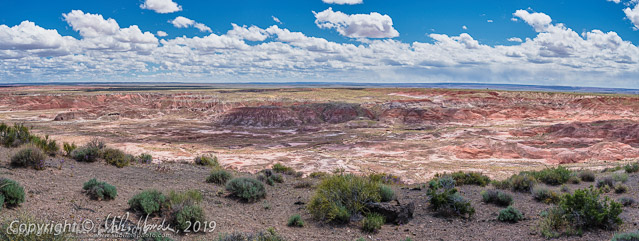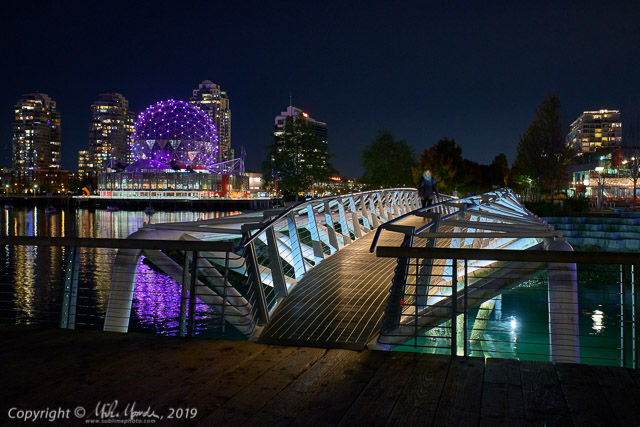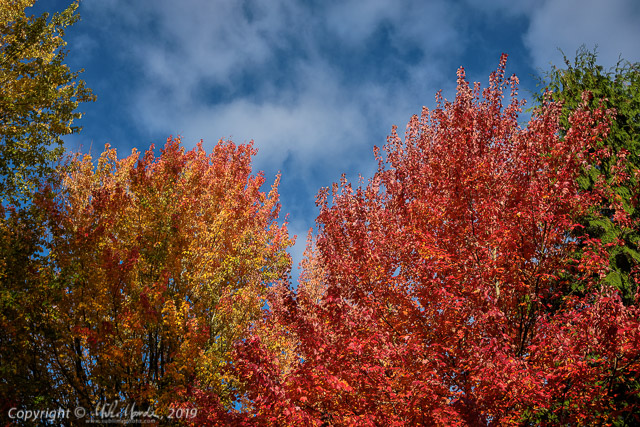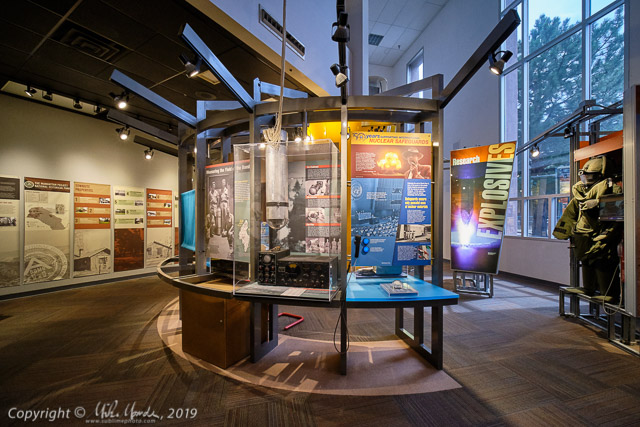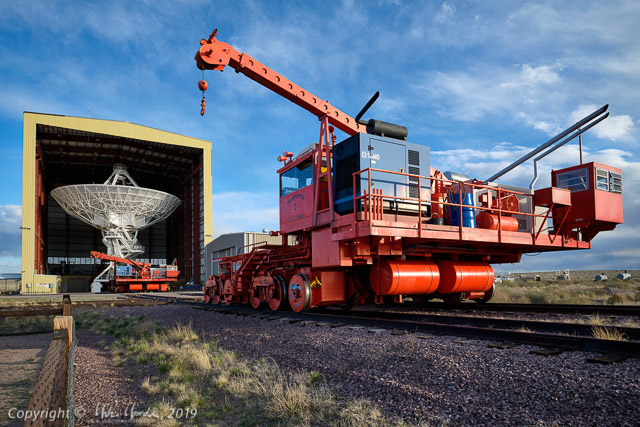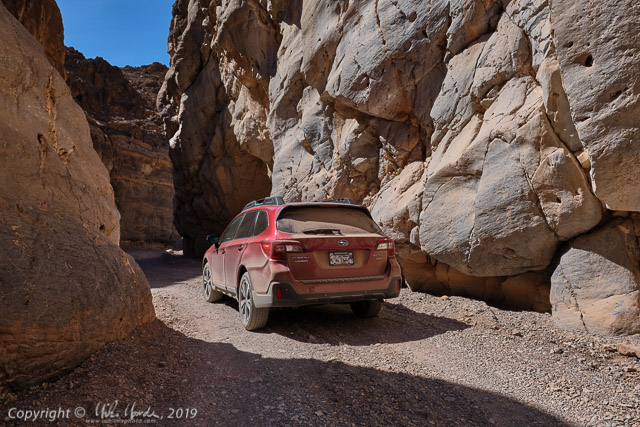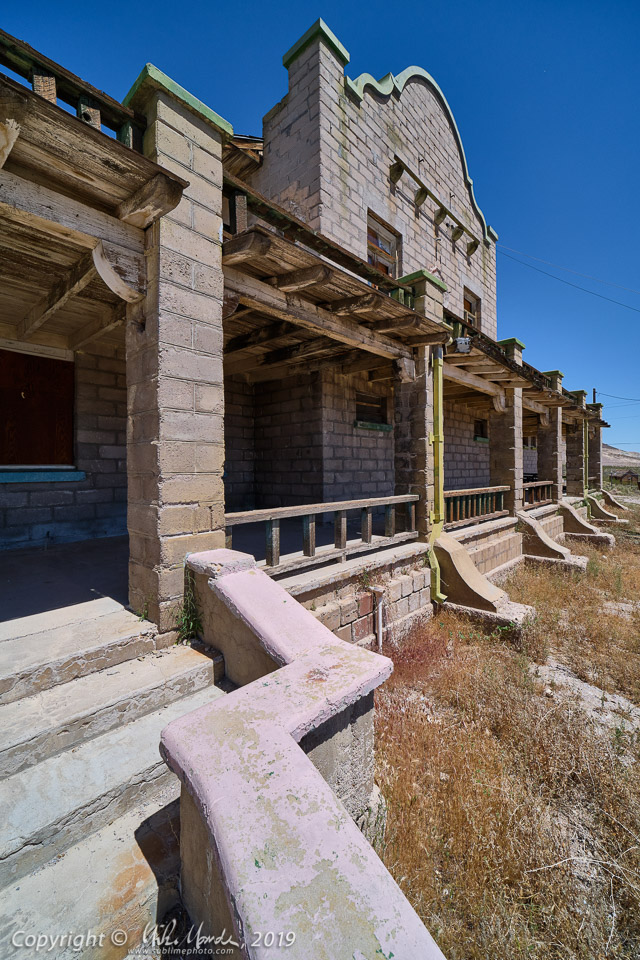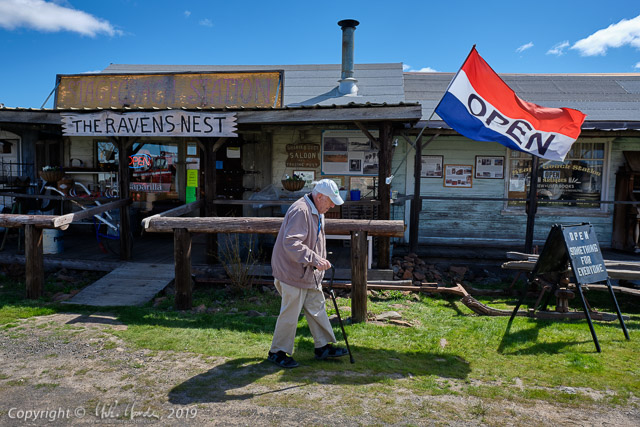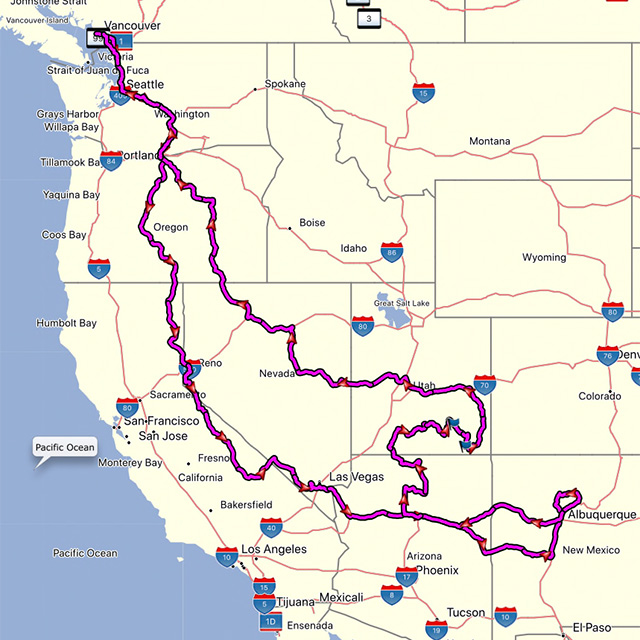Gallery (35 images): 2019 Grand Canyon Trip - Painted Desert
On the the way from Los Alamos to our ultimate destination, the Grand Canyon, we had one more stop to make at the Petrified Forest National Park. We did the drive from the north part of the park to the south, and got lots of wonderful clouds floating over the amazing Painted Desert scenery there. The desert is so richly colourful, that on some shots you can actually see the closer clouds reflecting the deep red, giving them slightly pink undersides.
Unfortunately, once we got to the south end of the park, where all the amazingly colourful petrified logs were, the sky had become total overcast, story and windy and starting to rain. So, unfortunately, apart from a few quick iPhone snapshots I took, running up to a viewpoint quickly to check the weather on the horizon (it wasn't good), I did not get any shots there this time around. Note that the petrified log and fragments that you'll see in the above linked gallery are nowhere near as brilliantly colourful as the agatized logs in the south end of the park.
Link to: All the blog posts from my 2019 Grand Canyon Trip
The expansive landscape in the area just begged for panoramic shots, and I did numerous stitches that turned out to be rather wide, too wide for the regular gallery in my opinion, so you can view them below. Clicking on the image will open a much larger version in a new window or tab, 1200 pixels tall by however wide they end up being.
These panos were solely processed in Adobe Lightroom, apart from downsizing in Capture One, with the original raw files being run through Adobe's new "Enhanced Details" demosaic process first, before being stitched into a panorama. This seemed to yield slightly better images with less stitching artifacts, when compared to using Capture One Pro to generate TIFF files and then going back and stitching those in Lightroom. In case you were wondering (and you probably weren't!), the 'E' in the filenames designate that I used this new Adobe feature before stitching the panoramas...

